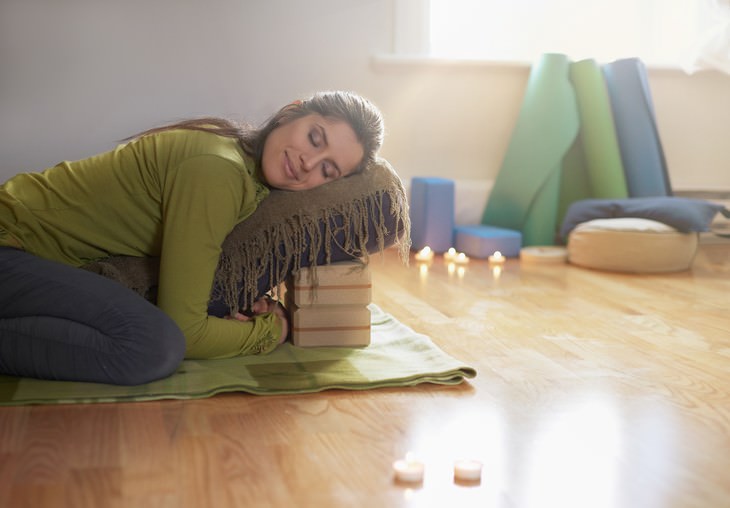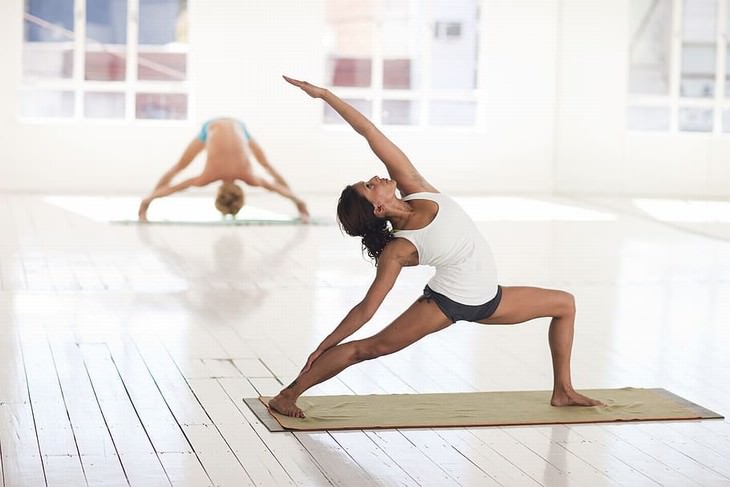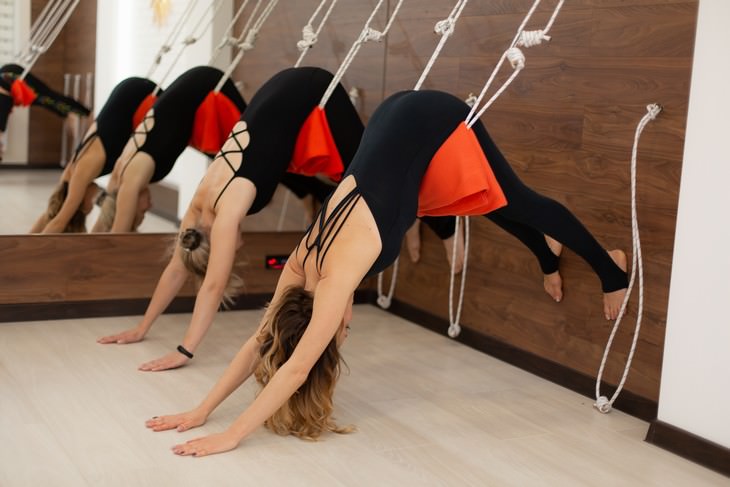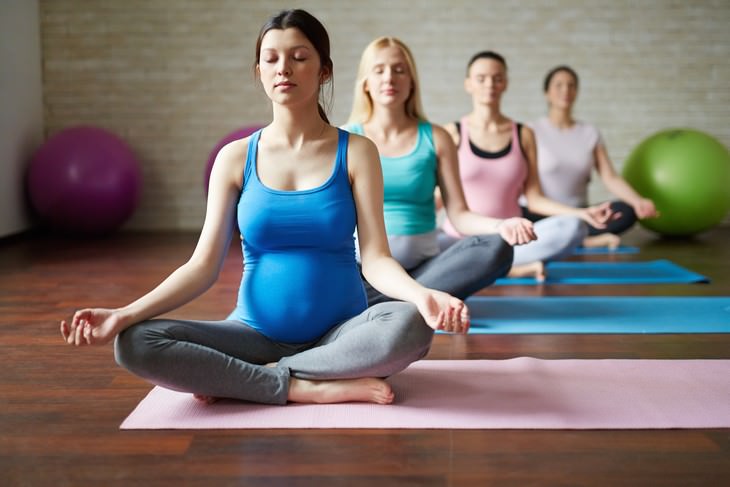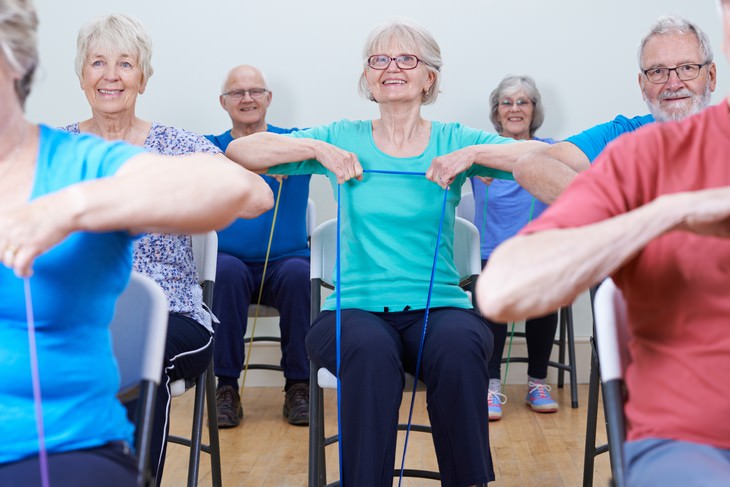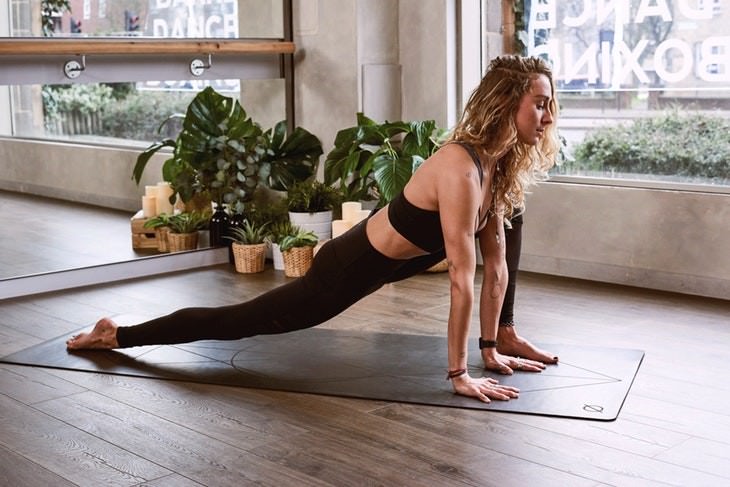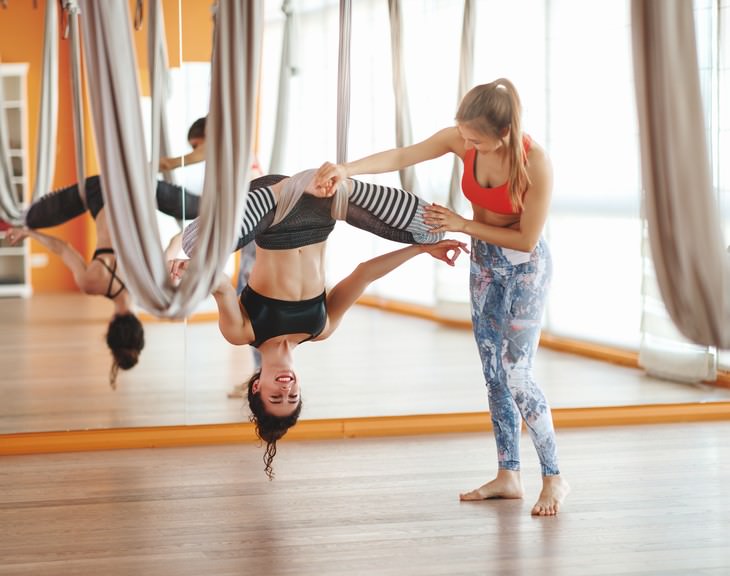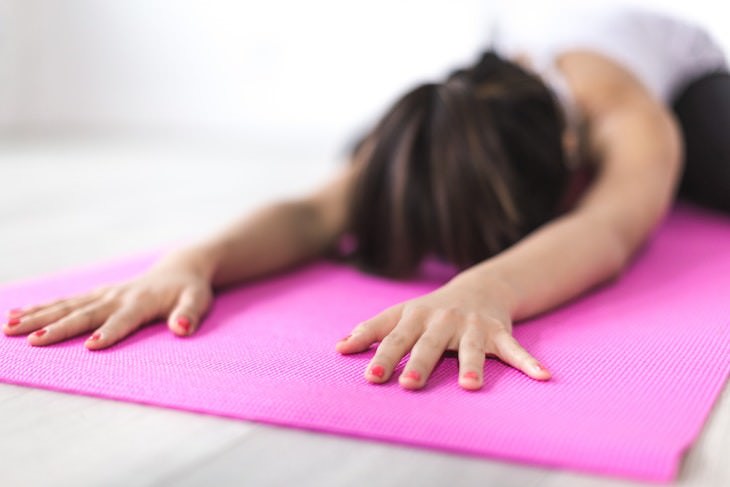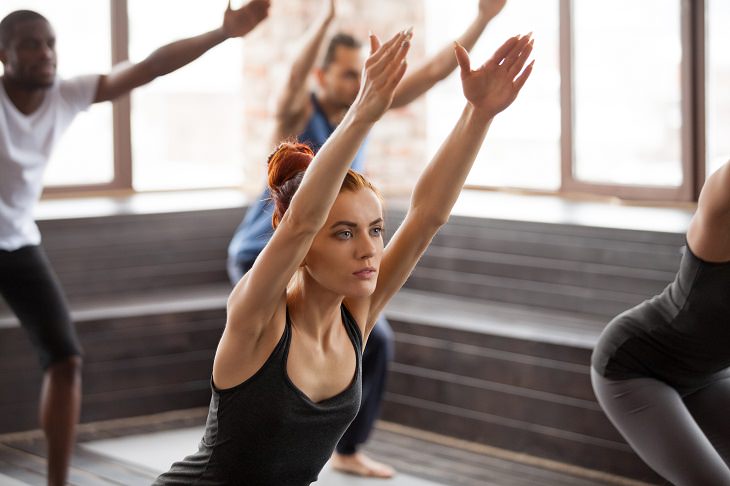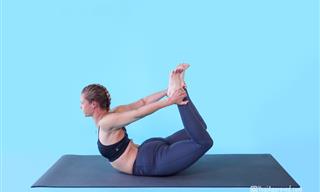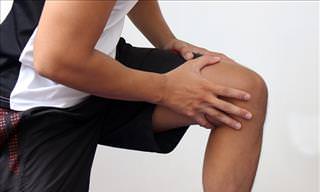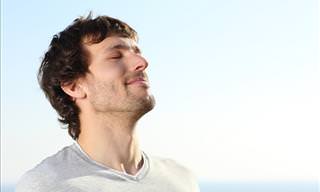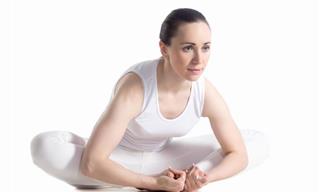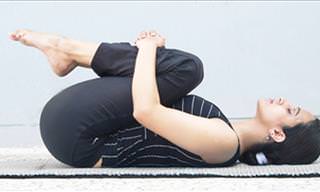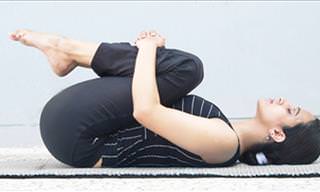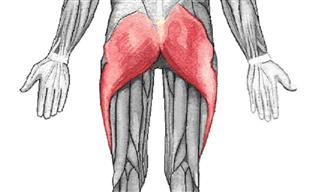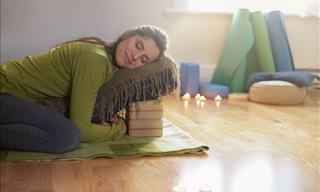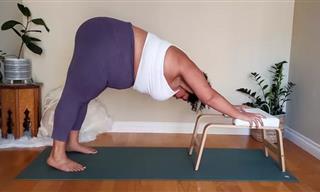1. Restorative Yoga
Restorative yoga is one of the most gentle styles of yoga, the sole goal of which is relaxation of the body and the mind. It's an excellent type of yoga you can do from home to calm down and de-stress after a long day, or as a means to relax before sleep. In a restorative yoga class, you will be taught to relax and 'turn off' the stress response by engaging your parasympathetic nervous system - known as 'the rest and digest system', which is the opposite of the sympathetic nervous system that's activated as a result of stress.
During a restorative yoga practice, one typically stays in a pose for quite a long time (5-10 minutes) to achieve deep relaxation and calmness, and that's why practitioners also don't shy away from different props, such as pillows, blocks, bolsters, and blankets that are meant to support the body.
Best suited for: any age and activity level, beginner-friendly, especially useful for those suffering from chronic stress, sleep issues, and anxiety.
2. Vinyasa (or Power Yoga)
Yoga Vinyasa is known under the name 'moving meditation', as it's quite an active and invigorating practice that's focused on synchronizing your breath with movement. During a Vinyasa practice, you will be required to move through a sequence of poses, typically without staying long in a posture and with no or few breaks. A Vinyasa class is typically on the more vigorous and dynamic side of the spectrum, and you will shed some calories and become fitter if you practice it regularly.
Best suited for: people familiar with yoga basics, those who love to move, and those who'd like to lose weight and become fitter.
3. Iyengar Yoga
Iyengar yoga is one of the most popular schools of yoga in the west started off by B.K.S. Iyengar, who believed that proper alignment and attention to detail in each posture is the most important aspect of yoga. An Iyengar-style yoga class will not be as dynamic as a Vinyasa class, but it's still a very active practice since you will be doing some deep work with your muscles, focusing on each detail while executing a specific posture. You will also hold a posture for longer periods of time.
To achieve the perfect and most therapeutic alignment in each posture and minimize the risk of injury or strain, an Iyengar yoga instructor will have you use a variety of props, such as blocks, straps, and ropes - all of which make the practice among the safest for every age.
Best suited for: beginner-friendly, safe for seniors and those with physical limitations, perfect for those suffering from muscle and joint pain, back pain, etc.
4. Ashtanga Yoga
Ashtanga yoga is probably the most physically demanding style of yoga. Ashtanga practice is based on ancient yoga techniques, and it's a set sequence of poses that follow one another in a specific order, much like a Vinyasa practice, but stricter. There are also several series of these sequences, each following series being more demanding than the previous, so practitioners are not allowed to execute postures from the second series, let's say, before they can do all the poses in the first series. Also, the use of props is discouraged in this style of yoga.
Ashtanga yoga is swift and vigorous, and it requires constant practice and quite a lot of experience with yoga basics, so it's not the best for at-home practice, especially for beginners. In return, ashtanga offers you a trim body and a calm, balanced mind.
Best suited for: experienced yogis, those who seek an active, athletic practice and don't mind a repetitive routine.
5. Prenatal Yoga
As you can guess from the name, prenatal yoga is a type of practice specifically tailored to pregnant women in all trimesters. This type of yoga is specifically devised to help mothers prepare for labor.
A prenatal yoga sequence will be different depending on a woman's term, but it will generally be much gentler than a regular yoga sequence and focus on strengthening the pelvic floor, reducing back and hip pain, and other pains and concerns commonly experienced during pregnancy. Props and specific adjustments to classical yoga postures are all there to make a woman's practice the most comfortable while remaining effective.
Best suited for: expecting mothers.
6. Kundalini Yoga
For those of you eager to experience the spiritual aspect of yoga, kundalini yoga is likely the best kind of practice. A typical kundalini practice will combine typical yoga poses with pranayama (breath exercises), meditation, chanting, and even singing, all with the goal of releasing the harmful kundalini energy that piles up in the spine.
It is also called 'the yoga of awareness', as much of the work you will be doing throughout a kundalini class will be focused on strengthening your mindfulness. Since a kundalini practice is not whole without chanting and meditation, it's usually difficult to practice it alone.
Best suited for: those who seek to increase their mindfulness and spirituality, join a community while also doing some exercise.
7. Chair Yoga
Like prenatal yoga, chair yoga is an adaptation of classic yoga techniques, but for people with physical limitations, especially older adults and those suffering from a physical disability. These classes are most often offered in daycare centers and retirement facilities, and they focus on improving flexibility, strengthening the muscles and increasing body awareness in a safe and non-strenuous way.
Usually, chair yoga poses are adapted versions of traditional yoga poses, which means that they offer the same health and emotional benefits traditional yoga does. Meditation and breathing techniques are also often incorporated into a chair yoga practice.
Best suited for: individuals with physical limitations and senior citizens.
8. Hatha Yoga
Hatha yoga is the ultimate beginner's practice, irrespective of your age or activity level. Classic hatha yoga is a mixture of different traditional styles, an introduction to yoga if you will. During a hatha yoga practice, students will be taught the basic postures, the proper alignment, as well as elements of Vinyasa, such as sun salutations, which are meant to be energizing and invigorating for the body.
All in all, hatha yoga is a good practice for those who do want to start a yoga practice, but haven't exercised for a while and need a slow and steady introduction to yoga that lets you try the different styles of yoga. For this reason, hatha yoga is probably the most well-known yoga variety in the world.
Best suited for: beginners, those who used to do yoga, but stopped for whatever reason, home practitioners.
9. Antigravity (or Aerial) Yoga
Aerial yoga is one of the most recently developed yoga styles that is actually a mixture of yoga poses, pilates and even dancing. This novel type of yoga makes use of specialized hammocks, so you'll have to find a studio that offers aerial yoga classes to try it.
The idea behind aerial yoga is that hanging freely in a hammock facilitates bending and stretching in the whole body more compared to classic yoga practices. Aerial yoga isn't advisable for people with a history of heart disease, as the upside-down position might be strenuous for the heart.
Best suited for: those looking for a different approach to yoga, those who want to focus on increasing flexibility.
10. Yin Yoga
Yin yoga is another deeply relaxing kind of yoga, and one that focuses on stretching out the deep muscles and connective tissues throughout the body, thereby reducing muscle pain and tightness in the joints and muscles. Like restorative yoga, yin yoga is quite slow-paced and poses are held for several minutes, which promotes deep relaxation.
Props, aromatherapy, dimmed lights, and music are welcome during a yin practice, and passive poses, mainly deep stretches are characteristic of the style. During a yin class, expect to only go through about 10 yoga poses during an entire 1.5-hour long practice.
Best suited for: all ages, no prior yoga experience required, those who seek relaxation and don't mind a slow-paced practice.
11. Hot Yoga
Hot yoga is another very special style of yoga, as practitioners complete the yoga sequence in a highly humid and heated room (about 40°C, 104°F), which is suggested to increase endurance and multiply the benefits of yoga. The style was founded by Bikram Choudhury, who devised a complete 26-step sequence to go with the toasty environment, but these days, different hot yoga studios offer various sequences and tinker with the temperature and humidity in the room.
Hot yoga sequences are on the more challenging side, so beginners aren't recommended to participate in a hot yoga class. There is also a risk of dehydration and over-exhaustion during a hot yoga practice, so everyone with a preexisting condition should ask their doctor to find out whether a hot yoga class is safe for them. Pregnant women, diabetes patients, and people suffering from cardiovascular issues aren't recommended to participate in these classes as well.
Best suited for: experiences yogis, those who want to lose weight, increase their endurance, and gain muscle definition.
 Go to BabaMail
Go to BabaMail


